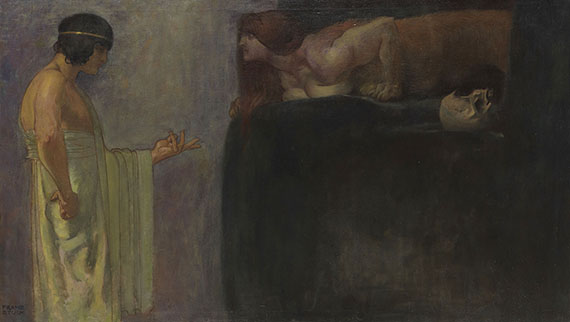Dictionary


French Rococo
The Rococo style began in France, and subsequently spread throughout Europe.
The style had its roots in the Regency epoch (c.1710-30), and reached its zenith during the Louis-Quinze (1730-55) period. Rococo survived the transition period (1755-60), but ended in the Louis Seize period (1760-90), having being supplanted by neo-classicism. French rococo was a reaction to Classicisme, the strict, rational, and awe-inspiring French high baroque. This change in direction occurred in the late 17th century, and was highlighted in the theoretical debate between the Poussinists (who favoured drawing as a superior art form) and the Rubenists (who advocated painting) at the French academy. At the beginning of the 1800s, the dispute was resolved in favour of a sensual palate. Art theory also moved away from rationalism, and an emphasis was placed on sensations in the arts, as expounded in Jean-Baptiste Dubos` "Réflexions critiques sur la poésie et sur la peinture" (1719). A reappraisal of previously underrated styles took place and subject matter changed with it. In portrayals of the Greek gods, noble figures such as Apollo and Hercules were rejected in favour of sensual figures such as Pan and Venus. Frequently eroticised Arcadias of all kinds became the main theme in the arts, as a setting for gallant shepherds, Pan’s domain or the home of the nymphs. These subjects were even able to enter the courts directly, as demonstrated in "Shepherd’s Games".
The stylistic transition from classicism to rococo was primarily accompanied by changes in the representation of light, colour, and lines. Pastel-like colours, such as rose and pale blue were combined with bright yellow, white and grey. Gold and silver were the preferred colours for furniture decor and interior design. Pictorial spaces were lit with light-hearted serenity, with the light entering every corner of the image, and the artist avoiding dramatic contrasts, an open, thin, brush stroke gave the work of the French rococo a playful light, appearance.
The Rococo style began in France, and subsequently spread throughout Europe.
The style had its roots in the Regency epoch (c.1710-30), and reached its zenith during the Louis-Quinze (1730-55) period. Rococo survived the transition period (1755-60), but ended in the Louis Seize period (1760-90), having being supplanted by neo-classicism. French rococo was a reaction to Classicisme, the strict, rational, and awe-inspiring French high baroque. This change in direction occurred in the late 17th century, and was highlighted in the theoretical debate between the Poussinists (who favoured drawing as a superior art form) and the Rubenists (who advocated painting) at the French academy. At the beginning of the 1800s, the dispute was resolved in favour of a sensual palate. Art theory also moved away from rationalism, and an emphasis was placed on sensations in the arts, as expounded in Jean-Baptiste Dubos` "Réflexions critiques sur la poésie et sur la peinture" (1719). A reappraisal of previously underrated styles took place and subject matter changed with it. In portrayals of the Greek gods, noble figures such as Apollo and Hercules were rejected in favour of sensual figures such as Pan and Venus. Frequently eroticised Arcadias of all kinds became the main theme in the arts, as a setting for gallant shepherds, Pan’s domain or the home of the nymphs. These subjects were even able to enter the courts directly, as demonstrated in "Shepherd’s Games".
The stylistic transition from classicism to rococo was primarily accompanied by changes in the representation of light, colour, and lines. Pastel-like colours, such as rose and pale blue were combined with bright yellow, white and grey. Gold and silver were the preferred colours for furniture decor and interior design. Pictorial spaces were lit with light-hearted serenity, with the light entering every corner of the image, and the artist avoiding dramatic contrasts, an open, thin, brush stroke gave the work of the French rococo a playful light, appearance.
Offers




